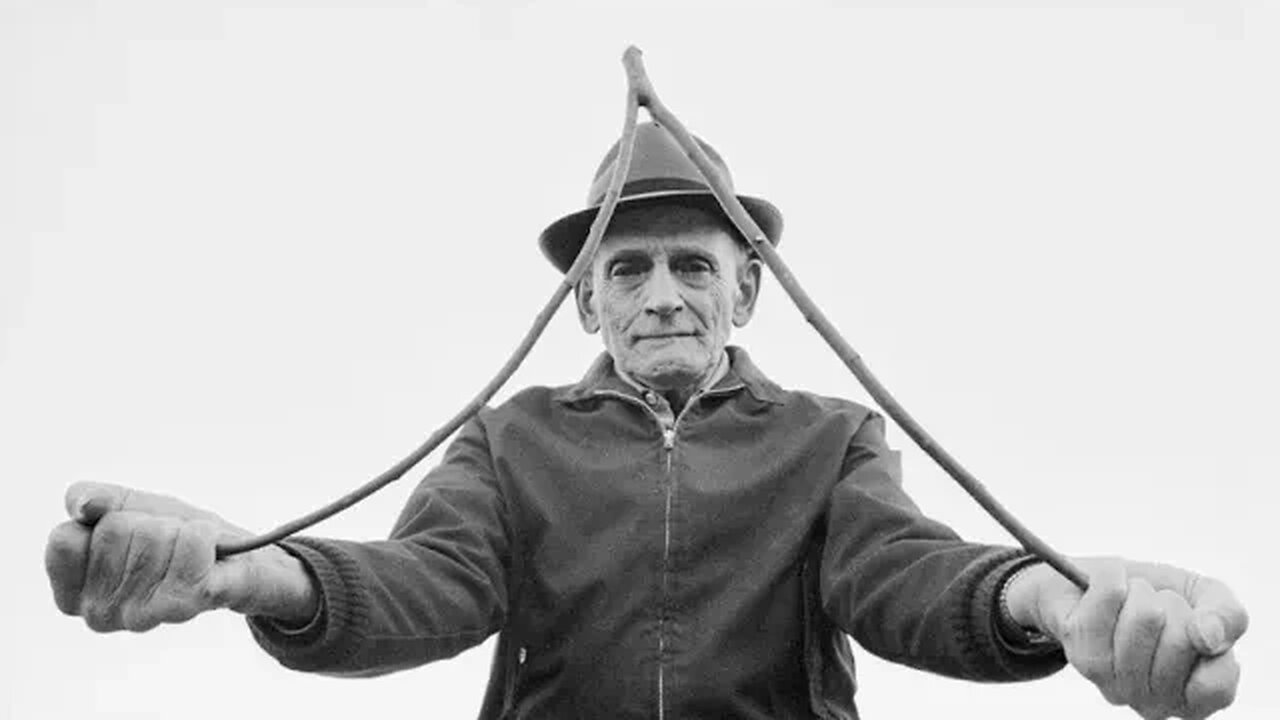Premium Only Content

Grizzly And Ginette Discuss Advanced Dowsing, Missing Persons and Pets
As prospectors, we have a deep connection to the past. We live in a world where technology has advanced to an amazing level. High tech devices that could only be imagined by science fiction authors a few decades ago are part of our everyday lives. Despite the current state of technological advancement, there is still no surefire way to detect unexplored gold deposits. Our pursuit of the yellow metal leaves no stone unturned. A good prospector will employ every tool at their disposal to get even the slightest edge in locating a gold deposit.
We look to the prospectors of the past and admire their ability to locate gold deposits with nothing more than their own ingenuity and a sense of adventure. Some techniques are no longer used and some haven’t changed for centuries. Dowsing fits somewhere in between. It’s always been a mystery. Nobody can explain how it works but many swear on their mother’s grave that it does.
Dowsing refers to the practice of using a forked stick, metal rod, pendulum, or similar device to locate underground water, minerals, or other hidden or lost substances, and has been a subject of discussion and controversy for
hundreds, if not thousands, of years. The practice is also called divining or witching. There is a history of mysticism, magic, and supernatural beliefs associated with the divining rod that dates back over 8,000 years.
In the Tassili Caves of northern Africa, an 8,000-year-old cave painting depicts a man holding a forked stick, apparently using it to search for water.
Divining rods were used by the Scythians, Persians, and Medes. The practice was used by Bavarian miners in the early 1500s and spread throughout Europe as their deep mining skills were highly sought after. Check out our article on Free Miners for a bit more info on that.
Controversy on the subject goes back to before medieval times. In 1518 Martin Luther listed the use of the divining rod as an act that broke the first commandment under the assumption that dowsing is in league with witchcraft. One of the most important books on mining during that period called “De Re Metallica”, published in 1556, describes the practice in this excerpt:
There are many great contentions between miners concerning the forked twig, for some say that it is of the greatest use in discovering veins, and others deny it. Some of those who manipulate and use the twig, first cut a fork from a hazel bush with a knife, for this bush they consider more efficacious than any other for revealing the veins, especially if the hazel bush grows above a vein.
Others use a different kind of twig for each metal when they are seeking to discover the veins, for they employ hazel twigs for veins of silver; ash twigs for copper; pitch pine for lead and especially tin, and rods made of iron and steel for gold. All alike grasp the forks of the twig with their hands, clenching their fists, it being necessary that the clenched fingers should be held toward the sky in order that the twig should be raised at that end where the two branches meet. Then they wander hither and thither at random through mountainous regions.
It is said that the moment they place their feet on a vein the twig immediately turns and twists, and so by its action discloses the vein; when they move their feet again and go away from that spot the twig becomes once more immobile.
Nevertheless, these things give rise to the faith among common miners that veins are discovered by the use of twigs, because whilst using these they do accidentally discover some; but it more often happens that they lose their labour, and although they might discover a vein, they become none the less exhausted in digging useless trenches than do the miners who prospect in an unfortunate locality.
Therefore a miner, since we think he ought to be a good and serious man, should not make use of an enchanted twig, because if he is prudent and skilled in the natural signs, he understands that a forked stick is of no use to him, for as I have said before, there are the natural indications of the veins which he can see for himself without the help of twigs.
There are variations on the construction of dowsing rods. The original technique consists of using a forked branch cut from a live tree, any tree will work but sticks from willows, witch hazel, and various fruit and nut trees seem to be the most popular. You grasp the ends of the “Y “in your hands with your palms facing upwards. The technique is to walk around and as you approach the target (ground water, gold deplost, etc) the rod will bend towards the ground.
-
 1:03:32
1:03:32
Winston Marshall
3 days ago"War On Children!" The DEMISE Of The West Starts With Schools - Katharine Birbalsingh
16.4K18 -
 1:45:00
1:45:00
RG_GerkClan
4 hours ago🔴LIVE Sunday Special - It's Time for World Domination - Civilization VII - Gerk Clan
14K6 -
 LIVE
LIVE
Major League Fishing
3 days agoLIVE Tackle Warehouse Invitationals, Stop 1, Day 3
685 watching -
 23:34
23:34
marcushouse
5 hours ago $4.48 earnedBREAKING: Starship Launch IMMINENT – But What’s This SURPRISE Flight 9 Plan?! 🚀🔥
18.5K3 -
 8:43
8:43
Film Threat
23 hours agoTHE MONKEY | Film Threat Reviews
35.6K1 -
 15:55
15:55
TSPLY
1 day agoThe Media Is Very Afraid Of FBI Director Kash Patel
23.2K23 -
 6:57
6:57
Cooking with Gruel
18 hours agoMake Cheese Great Again
19.7K10 -
 5:17
5:17
Mrgunsngear
21 hours ago $5.20 earnedPresident Trump Has Appointed A New ATF Director
27.5K23 -
 48:17
48:17
Athlete & Artist Show
8 days ago $0.48 earnedS5E1: Chucky Announces First Kid, 4 Nations Face Off, and more!
14.6K -
 38:30
38:30
hickok45
6 hours agoSunday Shoot-a-Round # 269
41.3K12